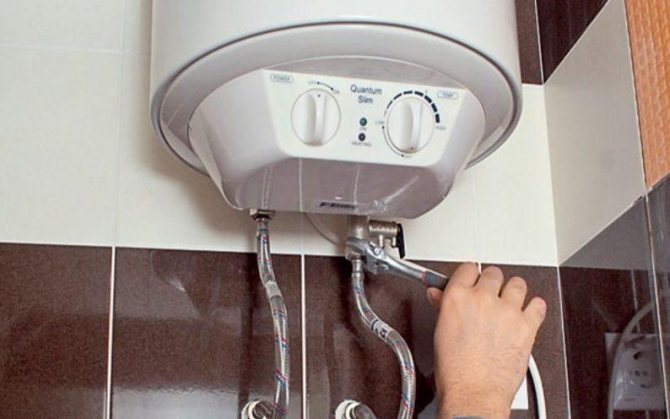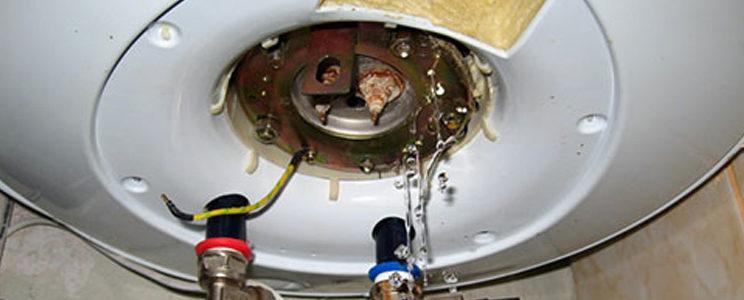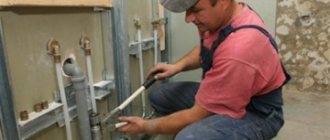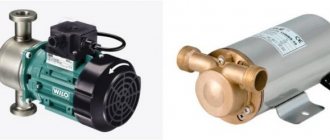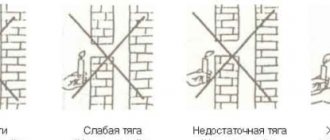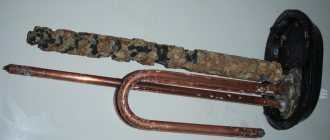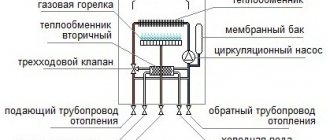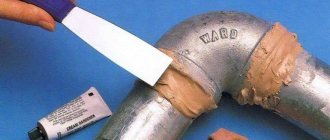What tools will be needed if the boiler is leaking
It's good if you have all this at home. If not, you can buy, most likely they will come in handy more than once. But today, even in the house management, you can rent many tools, which is also very convenient.

To eliminate a boiler leak, it is necessary to prepare tools for work
So, to eliminate the leak, you need:
- Adjustable wrench (larger than the largest nut in the boiler);
- Tubular wrench set;
- Electronic tester;
- Socket wrenches;
- Rubber hose to drain the water from the tank;
- Knife;
- Screwdriver.
If a full-fledged repair is required, then some minimal knowledge of how a water heater works may not be enough. That is, to figure out why the boiler is leaking, you will figure it out, but you will not master the repair. In this case, you need to rely on specialists.
Why is the boiler flowing from the bottom or from the top?
When you see that the boiler is leaking, disconnect it from the network. Then carefully inspect the device - determine the location and possible cause of the leak. If the boiler flows from above, then there can be only one reason: a hole has definitely formed in the tank.
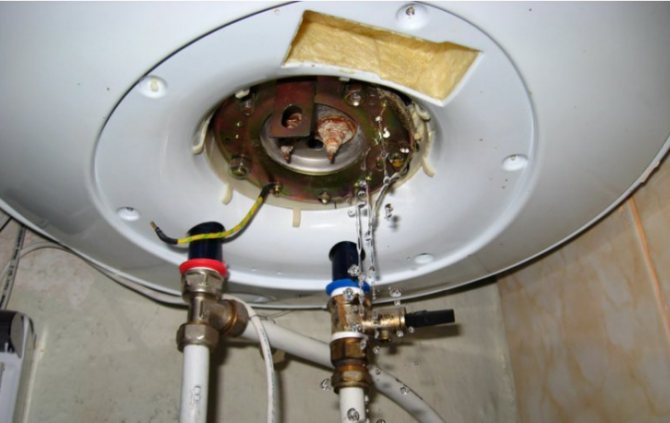

A boiler can leak for several reasons.
Why can holes appear in the tank:
- Manufacturing defects are not excluded;
- The device has been used for a long time, no preventive work and inspections have been carried out;
- The tank does not have a magnesium rod;
- The water from the pipeline is not of the highest quality;
- The heater tank was not grounded.
Whatever it is, the boiler will have to be repaired. If water flowed out from under the plastic cover, then the reason is serious - perhaps the boiler has broken down completely. If the tightness of the tank is broken, water flows from under the plugs, it moves along the water drainage hoses. The water heater needs to be replaced. Most often, the heating element "flies" - the very element that heats the water. It needs to be constantly descaled, then it will serve for a long time. In a word, everything is like in a washing machine, according to the same principle.
Can a leaking boiler be repaired?
After it has been precisely established the reason why the water heater is leaking, you need to choose the optimal solution to eliminate the problem. Starting to search for the cause of the breakdown, you need to prepare the tools that you may need in the process:
- water drain hoses;
- screwdriver, adjustable, tubular and socket wrenches;
- multimeter.
The boiler device is not as simple as it seems at first glance. If you do not have certain skills, if you detect a water heater leak, it is better to seek help from specialists.
The first thing to do if a leak is noticed is to disconnect the appliance from the mains and drain all the water so that the tank is empty. Only after that, you can proceed to the examination in order to establish the cause. Depending on what caused the leak, the next actions will be determined. In some cases, you can solve the problem with simple repairs, in others, you will need to change the boiler to a new one. It is best to do this before the warranty period expires.
So, due to the leaks of the apparatus, in particular the tank, as evidenced by the appearance of water leaks from the joints of the pipes, it cannot be repaired, therefore replacement is required.
Leakage from above, if all the maintenance rules were followed and the magnesium rod was changed in a timely manner, also requires replacing the boiler, because repair is impossible. Replacing the boiler will also be required in cases where the magnesium rod has not been changed for a long time, which has led to rotting of the tank (if the inner surface is without enamel).


Alteration of the water supply system is also necessary in cases where the rules for connecting the boiler to it are violated, especially when using plastic pipes and the absence of a special safety valve.
The boiler tank is operational when only the valve itself is leaking.
To eliminate the leakage of the tank lid of a water heater, in most cases it is necessary to replace the heater.
If the tank itself is leaking, it is almost impossible to repair it, because the boiler is a monolithic structure, the inside of which is covered with enamel. If the enamel inside the water heater is damaged, it cannot be repaired. In this case, you will need to buy a new boiler.
What to do: drip water heater Termeks
It all depends, of course, on the boiler model. These or those have typical leakage reasons. If, for example, one Termeks has a dry type of heating element, then a frequent cause of leakage in this case is damage to the bulb covering the heating element. Usually, in this situation, the flange with the flask is removed, and it is checked for fistulas. Fistulas can be sealed, or covered with cold welding. But the one that can withstand the temperature of the water.
There may also be a problem with the gasket on the flange:
- If the rubber gasket has collapsed, water will drip from below;
- To replace the gasket, you need to disconnect the device from the network, drain the water, remove the protective cover, disconnect all wires;
- Then the nuts are unscrewed around the circumference, the flange itself is removed;
- It is not difficult to see the gasket - if it is deformed or torn, you will have to buy a new one (when buying, take an old one that is out of order with you);
- After replacement, you need to fill the tank with water, check for fistulas.


The Termeks water heater may leak due to damage to the bulb
If one of the pipe joints begins to leak, it will become noticeable from the leaks on the pipes. The connection should be untwisted, the old fum tape is removed, a new one is wound. Then you turn on the water, check the knot again. But if a leaking tank formed as a problem, the repair is not so simple. Fistulas are more difficult to cope with.
The list of the main faults of Termex and their solutions
Now you can proceed to the most frequent breakdowns of Termex boilers, and find out how to repair them, spending the minimum amount of time and effort.
The water heater stopped working, the indication lamp does not light up
Such a problem is quite rare, and the household appliance is not always to blame for this situation. The main reason for the refusal to operate the water heater may be simply a faulty outlet, which will require a multimeter or indicator screwdriver to check.
The sequence for checking the operating voltage in the outlet:
- Turn on the multimeter, set the AC voltage measurement parameter, and place the probes in one and the second hole in the socket. The indication of the probes is irrelevant. Achieve quality contact. If the device shows 220 V with a slight deviation (plus or minus 10-15 V), then the socket is working properly. If the value is less than 200 V, or 0, then the outlet needs to be repaired.
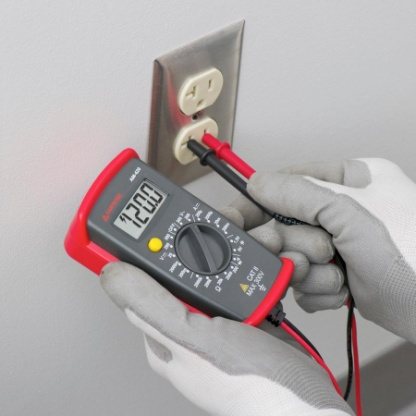

Voltage test with a multimeter
- You can also check the outlet with an indicator screwdriver. Insert a screwdriver into the first and then into the second hole of the socket. Where the phase is, the signal LED on the screwdriver will light up. If it touches zero, the screwdriver will not burn.
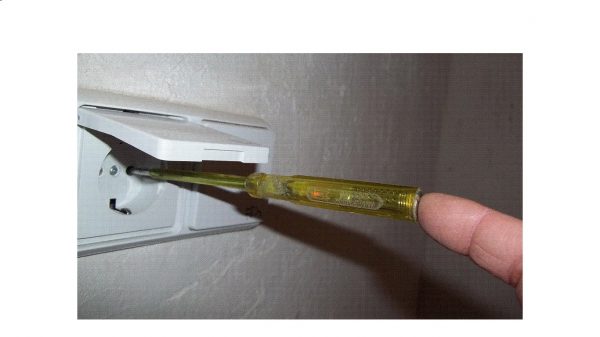

Checking the socket with an indicator screwdriver
If the socket is working properly, then use a multimeter to check the health of the water heater wire. To do this, the multimeter is turned on in the dialing mode and a probe is applied on one side to the plug, and on the other to the terminal box of the boiler, where the supply wire fits. An audible signal indicates the integrity of the wire. If one or both wires are damaged, they should be replaced with new ones.
The boiler does not heat up the water, but the indicator lamp is on
This problem can be solved in only one way - by replacing the heating element. The indication lamp shows that power is supplied to the heating element, but it does not work.


Removing the heating element from the water heater
The sequence of replacing the heating element in the Termeks water heaters:
- Disconnect the water heater from the industrial network by pulling out the appliance plug from the socket.
- Drain the water heater. Remove the branch pipe from the drain cock, put a rubber tube on it, which then lead to the bathroom or any container.
- Remove the protective plastic casing, which is fastened with metal screws hidden under the stickers from the manufacturer.
- Next, remove the terminals for supplying operating voltage from the heating element. They can be bolted or put on the heating element using special connectors.
- Unscrew the six bolts that secure the heating element flange to the heater body.
- Remove the heating element and replace it with a new one. Installation of a new heating element is carried out in the reverse order.
Before replacing a heating element, always verify that it is clearly defective. To do this, you need to use a multimeter on which the resistance test mode is turned on. If the device shows zero, then this means a breakdown of the dielectric material and a short circuit of the wire to the heating element housing a. If the unit is a wire breakage inside the tube of the heating element.
Water heating is too slow
There are 3 possible reasons for the malfunction:
- The heating element is covered with a layer of scale, which prevents the liquid from heating up quickly.
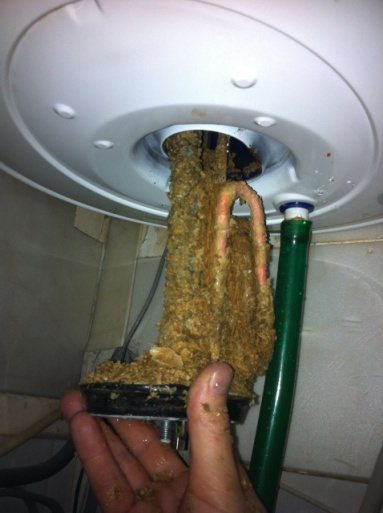

Example of a large amount of limescale on a heating element
- The thermostat is partially out of order. Upon reaching a certain temperature (much less than the set one), the thermostat turns off the heating element if it breaks, or passes insufficient voltage to the heating element.
- In more modern water heaters, control and monitoring units are installed. If it breaks down, an insufficient power supply to the heating element may occur, this will be displayed on the display as an error.
To clean the heating element from scale, it must be removed from the water heater (described above) and placed in a plastic bath with a liquid that has active chemical elements. For example, you can use the household product "Mole", which works very effectively when you need to get rid of scale or rust.
Instructions: Ariston water heater drip, what to do
Most of the time, the Ariston boiler leaks because its internal parts are not cleaned or cleaned out of time. Scale forms, destroying the parts of the water heater. This happens due to a large percentage of salts in tap water, an excessively high heating temperature, and, of course, untimely replacement of the anode.
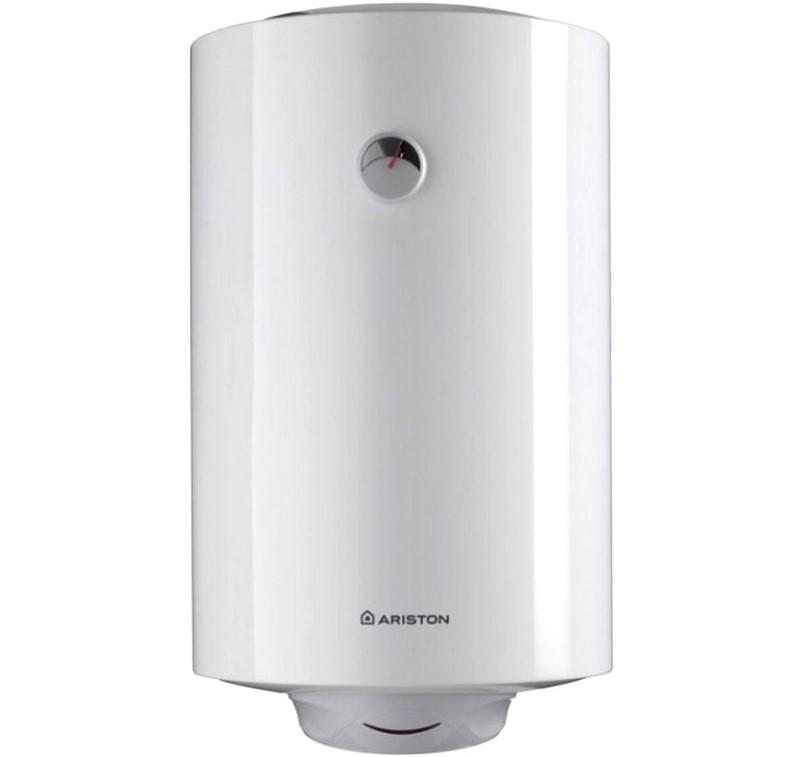

Ariston water heater may leak due to untimely cleaning of internal parts
Transportation problems should not be ruled out. It happens that just at this moment the boiler receives a strong blow.
Weld seams lose their integrity, and it is through them that water will leak. And, of course, the wrong installation is also worth mentioning. For example, a safety valve was not installed, the parameters of this valve are not equal to the pressure in the water main.
Leakage reasons
A storage water heater is a fairly simple device. Its basis is a container made of steel, covered from the inside with a protective layer, which prevents premature corrosion of the walls of the container and, accordingly, prolongs the service life.
The inner surface coating can be made of enamel, glass enamel, glass ceramics, a protective titanium layer, a stainless steel layer, etc. Usually this coating is the development of the manufacturer itself, and is kept in strict confidence.
There is a cover in the lower part of the boiler, into which a heating element, a thermostat and a magnesium anode are mounted. There is also a thermometer in the tank. At the bottom, an inlet pipe from the water supply is supplied to the boiler and a hot water pipe is led out, leading to the shower and kitchen sink mixers.
Outside, the tank is covered with a layer of polyurethane foam insulation and a decorative metal casing. The main reasons that contribute to the premature failure of the boiler tank are the following:
- if the pressure in the water supply system is more than 2 atmospheres, it is necessary to put a reduction reducer in front of the boiler, since when heated, the pressure will rise even higher, and an unacceptable deformation of the walls will occur with violation of the integrity of the protective coating;
- a safety valve is not installed directly in front of the boiler entrance, which relieves excess pressure when water is heated in the water heater;
- if the boiler is not prevented once a year, then scale forms on the walls and the heating element, which impairs the operation of the heating element and leads to premature wear of the boiler itself. It is also necessary to change the magnesium anode once a year to prevent wall corrosion.;
- heating the boiler to a high temperature above 70 degrees Celsius. The best option would be to operate the water heater at temperatures up to 50 degrees;
- do not drain water from the boiler for a long time - this leads to premature corrosion of the metal.
Applying in practice all of the above precautions, you can significantly increase the service life of the storage water heater and thereby provide yourself with comfortable conditions for many years.
It is interesting! Steam generator for a shower cabin: how to choose and install yourself
How to care for a boiler
So that leaks do not happen, and at one point the boiler does not expose you, let's say, a savings account, you need to take care of it correctly and in a timely manner. For example, always before entering the pipe into the water heater, a high quality ball valve or valve must be installed. This part must easily withstand constant water pressure loads.
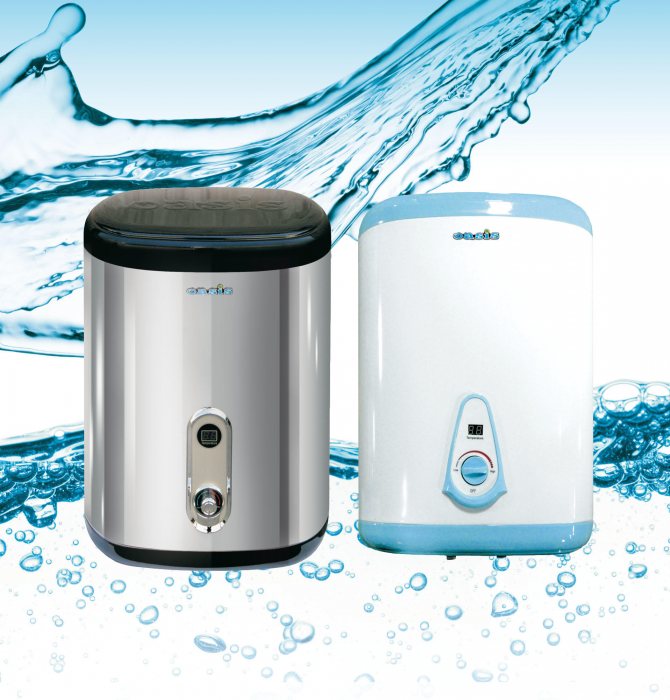

In order for the boiler to serve for a long time and efficiently, it must be properly looked after
Boiler maintenance:
- The gap between the boiler and the valve is a place for cleaning filters;
- Change filter membranes from time to time with new ones;
- Grounding is carried out strictly according to the instructions, use safety precautions.
To frequently flush the boiler, you just need to connect the hose to the lower outlet pipe of the heater, let the water flow into the body under strong pressure. The anode rod needs to be cleaned very often, and it is recommended to change it every year of operation. And the dip tube should also be cleaned in a timely manner.
Recommendations for use
In order for an electric water heater to serve as long as possible, it is very important to follow the basic recommendations during its installation and operation.
So, in addition to the fact that the boiler must have all the intended means of protection (protective grounding, safety valve, magnesium anode), it is very important to observe the following conditions when connecting the device to the water supply network:
- The supply of water supply lines should be made using mechanically stable materials (metal or metal-plastic pipes). This is due to the fact that in the process of operation in pipelines, water shocks and related deformations can occur.
- With an increased pressure in the water supply system (more than 5 atmospheres), reduction gears should be used that can supply a stable pressure to the tank that does not exceed the norm.
- A prerequisite is a periodic (at least 1 time in 24 months) revision of the water heater, which can significantly extend the service life of the device and reduce energy consumption (a heating element cleaned of scale heats water better faster).
From the foregoing, it can be noted that if the boiler (water heater) is leaking, then you should not panic, but it is better to analyze the situation and make an appropriate decision.
